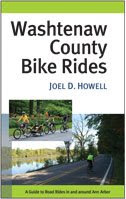Big Update! Details on using new versions of WKO+ and CrossOver were posted 1-27-10. Check the
new post for a much simpler process with these new versions.
Post updates:(Updated 1-16-10 with a correction/addition regarding running WKO+ version 2 with builds later than 102. WKO+ version 3 will be covered separately, though reports are that it works, too.)(Updated 6-4-09 with info to assist people using something other than WKO+ build 102 (i.e. build 103 or later).
Mac users training with a power meter or a heart rate monitor have limited options for quality training software. If you want to use the best training software out there, TrainingPeaks WKO+

, but who don’t want to run Windows, the following is one option you can use. It’s not clean, it’s not pretty, and those pretty much mean it’s not very Mac-like. But it can save you from needing a box just to run Windows, using a virtualization application (Parallels, VMWare Fusion), or dual booting with Bootcamp.
What you need:
- Desire to run WKO+ without ever starting up Windows
- Mac with an Intel processor
 GoldenCheetah, Garmin Training Center, PowerAgent, or other software to download data from your power meter or heart rate monitor
GoldenCheetah, Garmin Training Center, PowerAgent, or other software to download data from your power meter or heart rate monitor- CrossOver Mac (30-day free trial, $40) [version 7 is covered here; version 8 will be covered separately in the future]
- TrainingPeaks WKO+ (30-day free trial, $99) [version 2 is covered here; version 3 will be covered separately in the future]
Oh, and maybe a little bit of luck. But hopefully the following detailed information will eliminate most of the need for luck.

CrossOver Mac is a commercial version of Wine, the open source software that enables you to run Windows applications on a Mac or Linux computer without actually running Windows. Why would you want to do this? Running CrossOver Mac is a great way to run a single Windows application because it saves you from buying, installing, maintaining, safeguarding, backing up, and even booting Windows.
The downside is that WKO is not a supported application in CrossOver Mac so it requires some additional manual set up, the device download into WKO+ does not work, nor does the in-app help. (Users much smarter than me may be able to custom-configure their CrossOver installation to enable device download or enable the Help viewer; I would be eternally greatful for the sharing of such knowledge.) As a result, you need to download data using another Mac application, export the data to a csv file, then import it in WKO+. This process usually takes much less time than simply booting Windows, so I haven't found it a problem.
Now that you know that background, let’s get to business. Check out the
WKO+ with CrossOver Mac installation directions (PDF, 42 KB; updated 1-16-10) for all the nitty gritty. If you have additional suggestions, please leave a comment. If you try this, I recommend you bring your own tech savvy and patience. Since I can’t see exactly what you did and all of your settings, I’m not likely to have many troubleshooting tips other than, “Try a clean installation of CrossOver and WKO+ following the directions exactly as written. Oh, and good luck.” But I do hope these details offer some assistance to others interested in a Windows-less WKO+ experience.
 Maintaining focus during a race allows you to follow through with race strategy, save energy, stay nourished, be aware of race dynamics, and give your best effort. During training and daily life, having a good mental outlook helps maintain the consistency and lifestyle that supports your cycling habit through persistence, healthy habits, intense effort, and quality relaxation.
Maintaining focus during a race allows you to follow through with race strategy, save energy, stay nourished, be aware of race dynamics, and give your best effort. During training and daily life, having a good mental outlook helps maintain the consistency and lifestyle that supports your cycling habit through persistence, healthy habits, intense effort, and quality relaxation.




